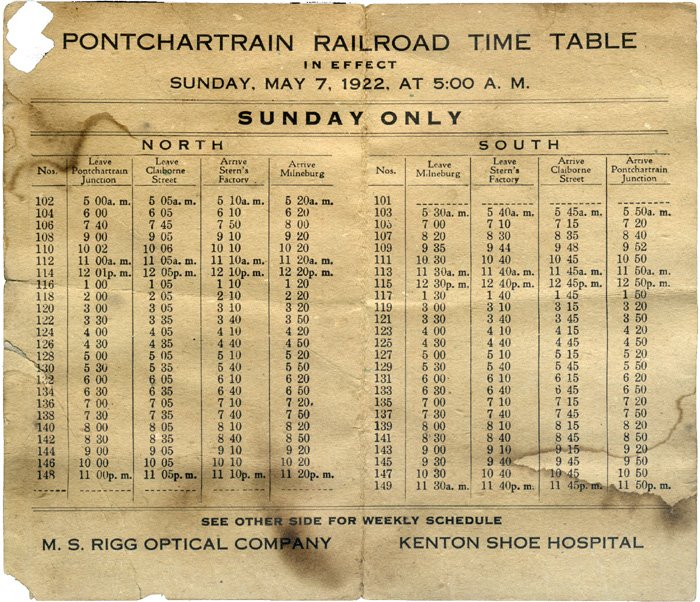|
Today in New Orleans History |
|
|
January 20


 Photographer John Norris Teunisson is Born January 20, 1869
John Norris Teunisson, born in Pike County, Mississippi on January
20, 1869, moved to New Orleans 1892 and worked initially as an inspector for the Underwriters Inspection Bureau.
The New Orleans city directories do not list him as a photographer until 1901, and the 1900 census gives his profession as
"insurance inspector." In 1893, he married Mary Ellen Frost (his marriage announcement states that he was from
Summit, Mississippi); the couple had four children, one of whom, Nellie May Teunisson, served for a time as her father's photographic
assistant. Once established, Teunisson had a long career as a
photographer in New Orleans. His photographs were widely reproduced during his lifetime in tourist guides to New Orleans,
in newspapers, and as postcards. In the 1950s, Teunisson moved to Washington, D.C., where he died on February 8, 1959, at
the age of 90. He is buried in Metairie Cemetery. The New Orleans Public Library's collection of Teunisson prints include views of the Atlanteans carnival ball of 1940, carnival decorations on downtown streets in 1906, the Fisk Free and
Public Library, local hotels (including photographs of drawings of hotels), riverfront scenes, and other miscellaneous local
sites. Additional collections of Teunisson photographs can be found at the Louisiana Digital Library. Pictured here is Teunisson's 1922 photograph of the F. W. Woolworth's store on Canal at Bourbon
streets. Source: The New Orleans Public Library  

To receive an update for each day in New Orleans
history, join our facebook page
- Today in New Orleans History
Bishop Charles Pasquale Greco, born on October 29, 1894 in Rodney, Mississippi, attended
St. Joseph Seminary in Covington before studying at the American College at Louvain in Belgium and the University of Fribourg
in Switzerland. He was ordained to
the priesthood by Archbishop John Shaw on July 25, 1918.
He served as vicar general of the Archdiocese of New Orleans and pastor of Our Lady of Lourdes
Church. On January 15, 1946, Greco was appointed the sixth Bishop of
Alexandria. He died on January 20, 1987. Photos of street paving, January 30, 1939. Several photos of Jackson Barracks on January 20, 1937.
|
|
|

To receive an update for each day in New Orleans history,
join our facebook page - Today in New
Orleans History.
Analytics |





